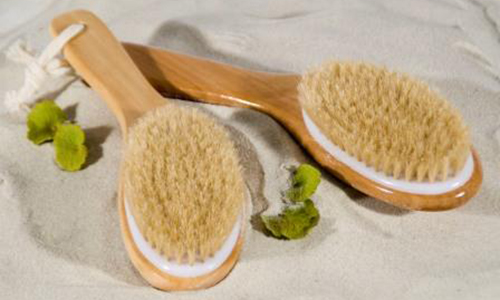Dry skin brushing is one of the most simple and effective ways to pamper your skin and improve your health.
Detoxification is performed by a number of organs, glands and transportation systems including the skin, liver, kidneys, intestines, lungs, lymphatic system and mucous membranes. Dry brushing stimulates the organs of detoxification to function more efficiently.
Benefits and Tips for Dry Skin Brushing
You will need a brush with soft natural bristles for dry brushing. Do not use synthetic bristles. This is quite similar to a hairbrush, but it has a longer handle. They are very affordable and some of the best dry skin brushes cost as little as $8-$10 and can be found in your local drug store or health food store.
- Dry skin brushing increases the circulation to the skin and encourages your body to discharge metabolic waste.
- Dry skin brushing stimulates the lymphatic system, which also helps to eliminate toxins from the body.
- Dry skin brushing helps your skin to breathe by removing dead skin cells, and opening clogged pores.
- Make sure that the dry brushing is done softly in the initial stages so that soreness and irritation is avoided. Application of a little more pressure can be done as your skin gets used to dry brushing.
- Your skin and brush should be dry. Shower after skin brushing to remove exfoliated skin.
- Do not do any dry brushing over cuts, wounds or rashes.
- Begin by brushing the outermost parts of your body (hands and feet) towards the center of your body.
- Pass the brush once over your body, except the face.
- The brush strokes should move towards your heart. This improvement in blood circulation is why so many people feel extremely refreshed after an energetic session of dry brushing.
- Dry brush the stomach area in a clockwise motion.
- Slight flushing of the skin is normal, due to increased circulation. The skin should not be red or irritated.
- If your skin is extremely dry: apply Jojoba, almond, or sesame oil after you have brushed and showered.
- Your brush should be cleaned at least once a week to prevent bacteria from building up. Wash the brush using a mild soap and warm water, hanging it to dry when you have washed it.
